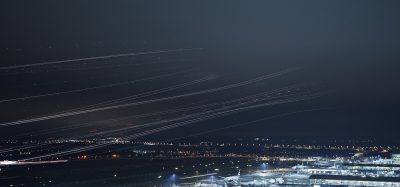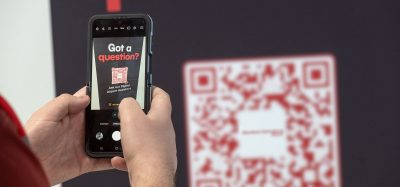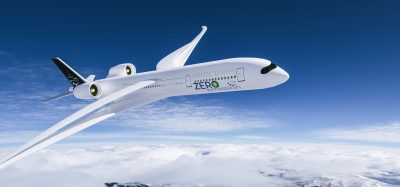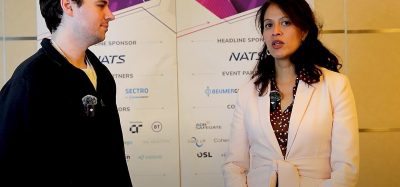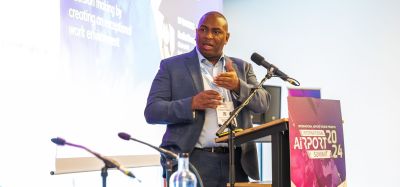Sustainability Series: How does Salvador Bahia Airport protect the environment?
- Like
- Digg
- Del
- Tumblr
- VKontakte
- Buffer
- Love This
- Odnoklassniki
- Meneame
- Blogger
- Amazon
- Yahoo Mail
- Gmail
- AOL
- Newsvine
- HackerNews
- Evernote
- MySpace
- Mail.ru
- Viadeo
- Line
- Comments
- Yummly
- SMS
- Viber
- Telegram
- Subscribe
- Skype
- Facebook Messenger
- Kakao
- LiveJournal
- Yammer
- Edgar
- Fintel
- Mix
- Instapaper
- Copy Link
Posted: 9 August 2019 | Rodrigo Tavares (VINCI Airports) | No comments yet
Each airport faces different challenges, but how do you ensure that the 214 native animal species and the wider biodiversity are not harmed by aviation? Rodrigo Tavares from VINCI Airports told International Airport Review’s Eve De Clerk about how Salvador Bahia Airport manages such a diverse challenge.

What steps were taken to achieve the level 1 ACA?
The VINCI Airports’ AirPact environmental strategy establishes shared goals for all the airports in our network between now and 2020 that go beyond simply complying with different regulations in force in every country. One of these goals is to obtain and keep our Airport Carbon Accreditation (ACA). For Level 1 ACA, the first important action we took at Salvador Bahia Airport, which VINCI Airports has operated since 2018, was to set an internal challenge that targeted a certification during our first operational year.
After that, we received training from VINCI Airports Headquarters Environmental Department and committed to map and to reduce the airport’s carbon footprint on the Salvador Bahia Airport Environmental Policy.
Before mapping, we built a team for this process involving all the areas related to it such as the department of purchase, finance, maintenance, operation, communication, IT and environment. From these departments we appointed a project leader, responsible to develop our carbon emission management system.
Very meticulous work was carried out to identify and map all the possible emission sources of Scope 1 and 2 in the airport, collecting data, organising documents and controlling all the flow; from the purchase of the sources (diesel, fuel, electricity, etc) until the emission and calculation of our carbon footprint. After the independent company’s audit and the audit and validation of our carbon footprint by WSP, we were awarded this important certification!
All these processes are now internal standards and routines. The next steps were to analyse our footprint composition, to identify gaps and opportunities and to define a strategy, with actions, to reduce it.
How does Salvador airport protect biodiversity?
Salvador Bahia Airport is located beside the Park of Dunes, an environmental reserve of six million square metres that has a fundamental importance of balance across the environment in Salvador and preserves a very rich flora and fauna. In terms of fauna, there are 214 animal species, including reptiles, mammals, amphibians and birds at Salvador Bahia airport.
To protect the local biodiversity, we have obtained a Fauna Management Permit, developed and implemented a Fauna Management Plan and built a team composed by biologists, veterinarians and engineers. This team executes routine monitoring of the fauna at the airport through sightings and collection. Moreover, regular checks of the patrimonial limits and fixing the damage, following the grass cutting activities, training the airport community about their surroundings and analysing the main behaviour of animals to develop non-harmful techniques to capture species that present risks to the airport operations. When animals are captured, they are identified, ringed, feed, analysed, treated and set free in licensed areas. All these processes and data are managed for decision making with the objectives of protecting the biodiversity and making the airport safer. This is totally aligned with the ambitious environment policy of VINCI Airports to protect biodiversity while managing the wildlife hazards risks which is the top priority.
A very important indicator managed at the airport is the number of animal captures. Before VINCI Airports operated in Salvador, there were no animal capture registers at the airport. The only actions that were taken towards animal management were the use of fireworks to frightening the birds away. However, an internal study concluded that this action was not effective here and could increase the risk of birdstrikes. With the implementation of our Fauna Management Plan and with the development of no harmful capture techniques according each species’ behaviour, we captured (and released) 158 birds in 2018. In 2019, we have already captured (and released) more than 870 birds. So, as in the Hollywood movies, we are very proud to say that “No Animals Were Harmed in the Making of This Work”.
Why do you capture birds at the airport?
As well as for the environment, safety is another important subject for VINCI Airports, and another reason we capture birds. Birds can represent risks to the airport operations because they can hit an aircraft and endanger human lives as well as posing threat to the birds involved. We are responsible and take safety measures to reduce these risks. Few airports take measures that can be lethal to birds, like using guns. At VINCI Airports, we are committed to protecting wildlife and we have decided to use techniques that pose no harm to animals, and capturing birds is one of the strategies we developed for that. It is important to mention that there are many traps for capture available in the market, but to have effective results, the animals or bird’s that you want to capture must be studied and it is important to choose the correct tool for that. Here, in Salvador, the traditional traps were not effective at the beginning of the work and our results were frustrating. After studying the main species’ behaviour, we could understand them and improved and developed at least five new techniques for capturing the seven more risky species at the airport. Also, we were able to identify the best period, time and place to implement the traps.
Since we started developing and implementing the bird capture actions, added to the removal of attractive focus, we have reduced 80 per cent of bird strike damages at the airport on our first operational year. It means that our strategy and actions are being effective, preserving the biodiversity and making our airport safer day by day!
Can you give a brief overview of how the waste treatment plant has helped the airport become more environmentally friendly?
Before VINCI Airports operation in Salvador, the waste treatment plant was in a really poor condition, not meeting all of the legal requirements and being structured for a linear concept, where all the waste was sent to landfill.
This meant we had the opportunity to develop a new waste management operational flow and to project a new waste treatment plant. During this step we projected the waste treatment plant as an extension of the waste operational flow, adopting the concept of the circular economy, thinking of alternatives to increase its productivity, making the process safer, easier and with the welfare of the operators in mind. This new process and structure counts with a valorisation area, where the waste is segregated by trained professionals to receive the correct final destination according to its characteristics (recyclables, organics, infectants, contaminants, etc). Also, the structure counts with specific and adequate areas for contaminated and infectant waste storage, an area for washing the collecting carts used in the process, an office, male and female locker rooms and an eating place for the workers. With the Circular Economy concepts adoption, our mission is to stop treating the ‘waste’ as ‘waste’ and start treating it as a raw material for productive processes. We studied solutions for each type of material generated at the airport to increase its valorisation and destination, always looking for the most noble use or treatment.
Since our new, recently installed, waste treatment plant, we have increased our recycling rate from one per cent to 20 per cent. In 2019, our recycling target is to reach 50 per cent and, by 2021, we want to recycle 100 per cent of our waste, which means that, by the end of next year, Salvador Bahia airport will send zero waste to landfills.
How does solar power help the airport?
When calculating the Salvador Bahia airport footprint, from the consumption of each power source (electricity, diesel, gasoline, etc) and their emission factors, we noticed that electricity consumption represents 80.4 per cent of our footprint impact, that means that our highest CO2 emissions come from this source.
Looking for this impact reduction, we will installed a five MW solar farm at the airport in 2019. It will supply the new terminal and connector that are being built here with clean energy. In other words, we will double the airport’s size and capacity without increasing its carbon impact.
Our financial team is also very happy with this initiative, as once there will be no negative impact on the energy OPEX next year, when the airport will be the double d in size This action, in addition with the other energy efficiency measures, will allow us to soon achieve the Airport Carbon Accreditation Level 2 certification: Reduction.
Biography
Rodrigo Tavares is Environment Manager at Salvador Bahia airport, which VINCI Airports operates since 2018. Rodrigo has over ten years developing and implementing Environment Management Systems based on circular ecomomy concepts. Focused on sustainable development, more productive processes, cost reduction and team building, has led the first “Zero Landfill” project in the Brazilian Automobilistic Industry. Rodrigo joined VINCI Airports’ Salvador Bahia airport in 2017. He has been deploying VINCI Airports’ AirPact environment strategy in Salvador, notably the first Waste Water Treatment Plant in the Brazilian Airports that treats and reuses 100 per cent of its effluents.
Related topics
Airport Carbon Accreditation (ACA), Social responsibility, Sustainability, Sustainable development, Wildlife hazards



